Contrast predominates on the beaches of Asturias, bathed by the Cantabrian Sea. From west to east, none of the more than one hundred beaches where land and sea merge is the same. They are all different
/documents/39908/67698/mexota.jpg/e1e8bbad-15dc-82a3-6bbe-8d607142637e?t=1747742586623
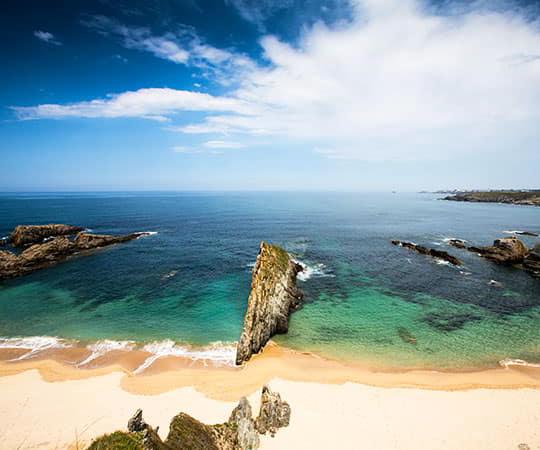
You will be surprised by its shapes and landscapes and its crystal-clear waters, which turn each visit into a unique and different day, especially its proximity to the mountains, as well as its different attractions depending on the tides.
The Asturian coastline, the best preserved in the country due to its undeveloped beaches and the control of buildings on the coastal strip, offers a unique natural environment with many possibilities. In winter you can become a luxury spectator and capture the fierceness of the sea in your photographs; and in summer you can enjoy a relaxing day in the sun and the therapeutic benefits of a saltwater bath in a privileged setting.
In addition to the recognition of the local population and tourists, the excellence of the beaches along the Asturian coastline is endorsed by the twelve blue flags awarded by the European Foundation for Environmental Education and by numerous quality seals. Asturias offers easily accessible natural spaces, with car parks, services, recreational areas and nearby tourist accommodation.
Still not sure which beach will be your next? Discover it here!
Choose, if you can, between a hidden cove sheltered by cliffs, an urban beach, or an endless stretch of sand to enjoy a paradisiacal day all year round. Or, if you prefer, between a solitary retreat, a youthful vibe, or a family-friendly setting. Besides cooling off, most also offer spaces for fishing and sports activities.
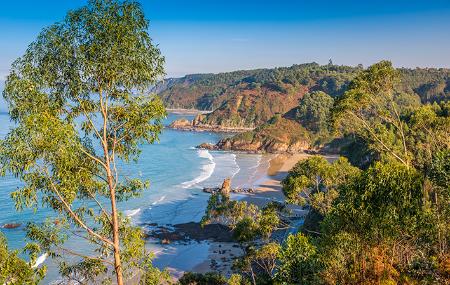 This is the most important beach in the council of Muros de Nalón and shares its western end with the council of Cudillero, Playa de Campofrío.
This is the most important beach in the council of Muros de Nalón and shares its western end with the council of Cudillero, Playa de Campofrío.
Aguilar and Campofrío beaches
Muros de Nalón y Cudillero Asturias Centre White sandy beach in natural surroundings.
White sandy beach in natural surroundings.
Almenada Beach
Llanes Eastern Asturias Beach of white sand and pebbles in a semi-urban environment.
Beach of white sand and pebbles in a semi-urban environment.
Andrín Beach
Llanes Eastern Asturias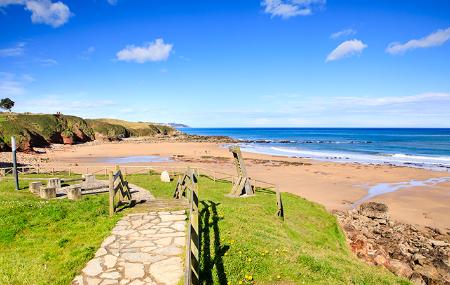 Arenal de Morís is a paradise for families with children and an ideal destination for surf lovers. Its natural beauty makes it one of the jewels of...
Arenal de Morís is a paradise for families with children and an ideal destination for surf lovers. Its natural beauty makes it one of the jewels of...
Arenal de Morís Beach
Caravia Eastern Asturias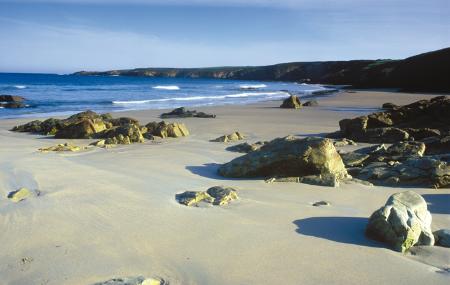 Fine sandy beach in a semi-urban environment.
Fine sandy beach in a semi-urban environment.
Arnao Beach
Castropol Western Asturias In the shadow of a rehabilitated mining castle
In the shadow of a rehabilitated mining castle
Arnao Beach
Castrillón Asturias Centre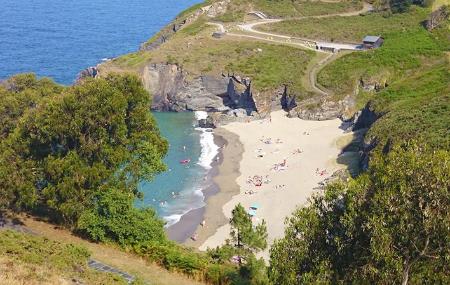 Beach located on the eastern shore of Cabo de San Agustín.
Beach located on the eastern shore of Cabo de San Agustín.
Arnelles Beach
Coaña Western Asturias A beach with particular charm located right on the seafront promenade.
A beach with particular charm located right on the seafront promenade.
As Furadas Beach
Tapia de Casariego Western Asturias This is a beautiful beach in the council of Castrillón.
This is a beautiful beach in the council of Castrillón.
Bahínas Beach
Castrillón Asturias Centre Golden sandy beach in a semi-urban environment.
Golden sandy beach in a semi-urban environment.
Ballota Beach
Llanes Eastern Asturias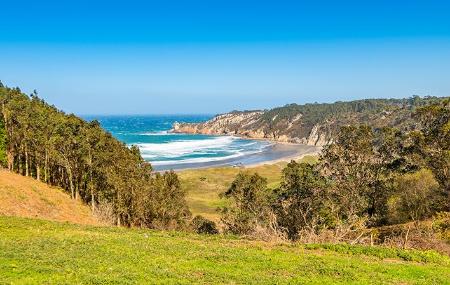 This beach is part of the Barayo Partial Nature Reserve.
This beach is part of the Barayo Partial Nature Reserve.
Barayo Beach
Valdés y Navia Western Asturias Small beach located in the eastern sector of Playa La Isla.
Small beach located in the eastern sector of Playa La Isla.
Barrigón Beach
Colunga Eastern AsturiasThe beaches of the west, the wildest and most natural
The closest beach to the Eo estuary, Arnao (Castropol), offers fantastic views of the Cantabrian coast; and surfing enthusiasts especially enjoy Penarronda (between Castropol and Tapia de Casariego) and Anguileiro (Tapia de Casariego), one of the most highly valued spots in the area, as well as Frejulfe, in Navia, which stands out for the influence of the tides and its darker sand. In the council of Valdés, Otur beach is another tourist attraction in the west, as is Luarca beach, which is sheltered from the strong waves, while Cadavedo beach, also known as Ribeirona, is notable for its peculiar shape. In Cudillero, the Concha de Artedo, one of the most special beaches in Asturias due to its rocky shape, and El Silencio, another sandy area of great beauty, protected by cliffs, stand out.
The beaches of the centre: sandbanks, dunes, rocks and seaside towns
The central stretch of Asturias, with Peñes as the most northerly point, boasts beaches such as Aguilar, with golden sand and surrounded by large rocks that make it very attractive.
The extensive sandy area of Los Quebrantos, at the mouth of the river Nalón; the long urban façade of Salinas (Castrillón), a reference point for surf lovers; the dunes of the beautiful surroundings of Xagó (Gozón), and Xivares (Carreño), ideal for all kinds of public. In Gijón/Xixón, the great maritime city, the beach of San Lorenzo, one of the most popular in the Principality and which runs between the Cerro de Santa Catalina and the river Piles; Poniente, an excellent artificial sandy area created on the site of an old shipyard next to the marina, and L'Arbeyal, the scene of numerous sporting events, stand out.
The beaches of the east: golden sands and unique spots
The Oriente is characterised by its fine, golden sands in surroundings of unquestionable beauty. This area is home to many of the beaches recognised as the most beautiful in Spain. The spectacular Rodiles, at the mouth of the Villaviciosa estuary, and La Griega(Colunga), with its famous dinosaur footprints, are just a few of them.
In Llanes, Gulpiyuri is a peculiar and singular beach separated by rocks and vegetation that receives the water through an underground conduit; Buelna, a natural and familiar cove, and Po, with the peculiarity of its protected and calm waters. There are sandy areas of special singularity such as the nearby bufones de Pría, Arenillas and Santiuste. These are some of the examples of the richness of the eastern area, such as the beach of La Franca, popular since the 19th century for its old seaside resort, in the part closest to the Tina Mayor estuary.
